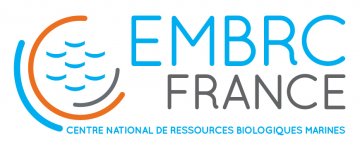Thesis "Biophysical and cellular mechanisms of tip-growth in the brown algae Ectocarpus"
Hervé Rabillé
JURY
- Pr. Arezki Boudaoud, ENS de Lyon, rapporteur ;
- Dr. Siobhan Braybrook, University of California Los Angeles, rapporteuse ;
- Pr. Benedikt Kost, Fredrich Alexander Universität, Erlangen-Nürnberg, examinateur ;
- Pr. Bernard Kloareg, Sorbonne Université, examinateur ;
- Dr. Bénédicte Charrier, CNRS, directrice de thèse.
ABSTRACT
Tip-growth (TG) is a universal mode of polarized cell elongation, during which the growth activity is restricted to the pole of the cell. Its wide taxonomic occurrence makes it an ideal model system for evo-devo studies of basic mechanisms of cell morphogenesis across the tree of life. Nevertheless, in eukaryotes, TG studies have mainly focused on land plants and True Fungi, leaving the over taxa largely underexplored. To fill in this knowledge gap, brown macroalgae are particularly appealing because of their unique evolutionary history, their particular cellular structures and their physical environment that have likely resulted in the acquisition of original morphogenetic mechanisms. During this thesis, I aimed to characterise the biophysical mechanisms of TG in Ectocarpus sp., a model species for brown algae. To do so, I measured the pattern of wall strain rate at the apex as well as the turgor pressure, the cell surface curvature and the wall thickness, in order to supply a viscoplastic model of TG with biological parameters. The model predicted that the wall expansion pattern in the apical cell is not determined by a gradient of wall intrinsic mechanical properties, but instead by a gradient of wall thickness. Moreover, experimental measurements of immediate wall deformability (mainly elastic) evidenced an inverted gradient of wall deformability, opposite to that expected if this property was to control the ability of the wall to expand. While the global abundance in alginates, a major component of the wall, seems to impact the wall stiffness where the stress is high, both mannuronate and guluronate blocks appeared necessary for this function. Finally, we have demonstrated that in Ectocarpus, the actin filaments (AFs) are also indispensable to restrict growth at the apical tip and so in the establishment of the tubular shape in the subapical region. Fluorescent staining of AFs showed an “apical cap” under the dome, a structure common to several other groups, that seems involved in mechanically reinforcing the thin wall at the tip. These data suggest that AFs could control the wall strain pattern along the apical cell by exerting a direct mechanical influence on the wall. Overall, the results obtained during my PhD demonstrate that the biophysical mechanism of TG in Ectocarpus is radically different from that found in land plants and fungi. They pave the way for uncovering the molecular pathways that regulate TG in this group, and thus for future promising evo-devo studies of this particular mode of cellular morphogenesis.
Key-words: actin ; biomechanics; brown algae; cell wall; Ectocarpus; tip-growth







